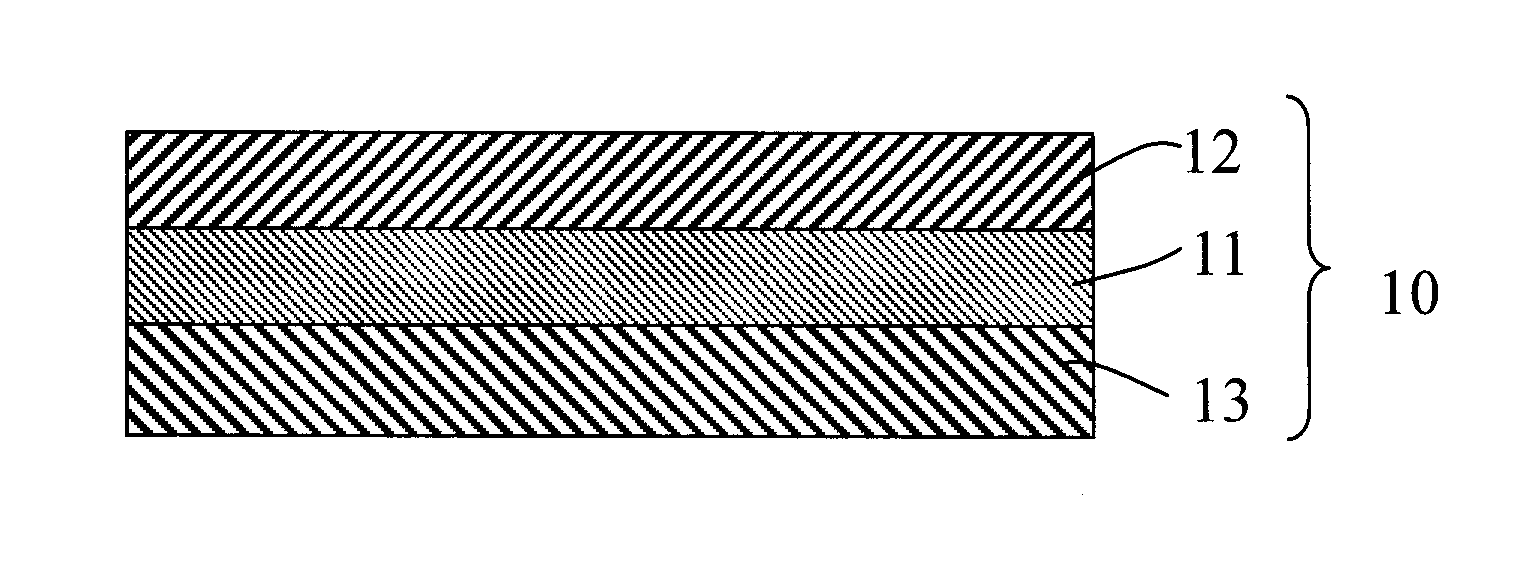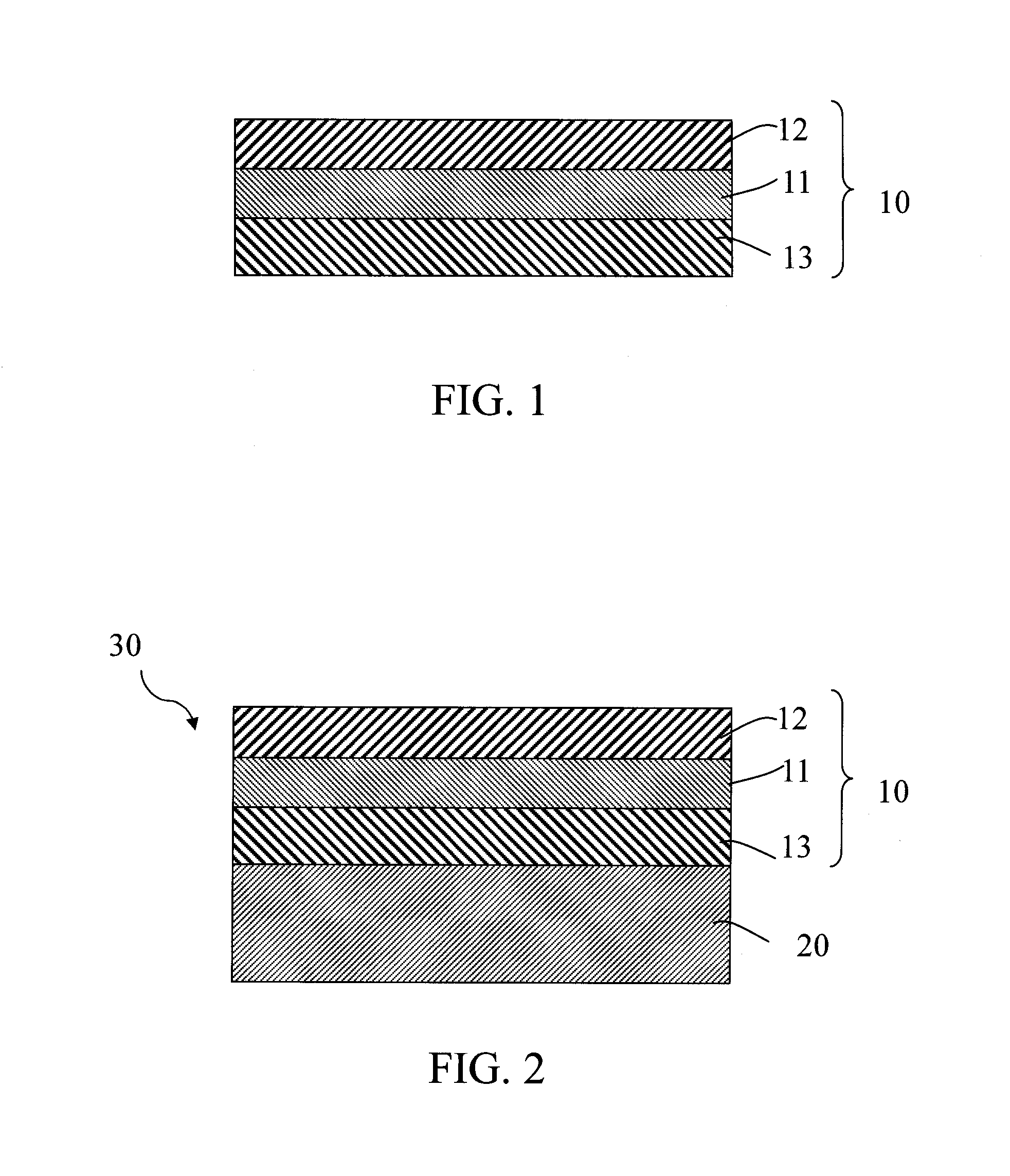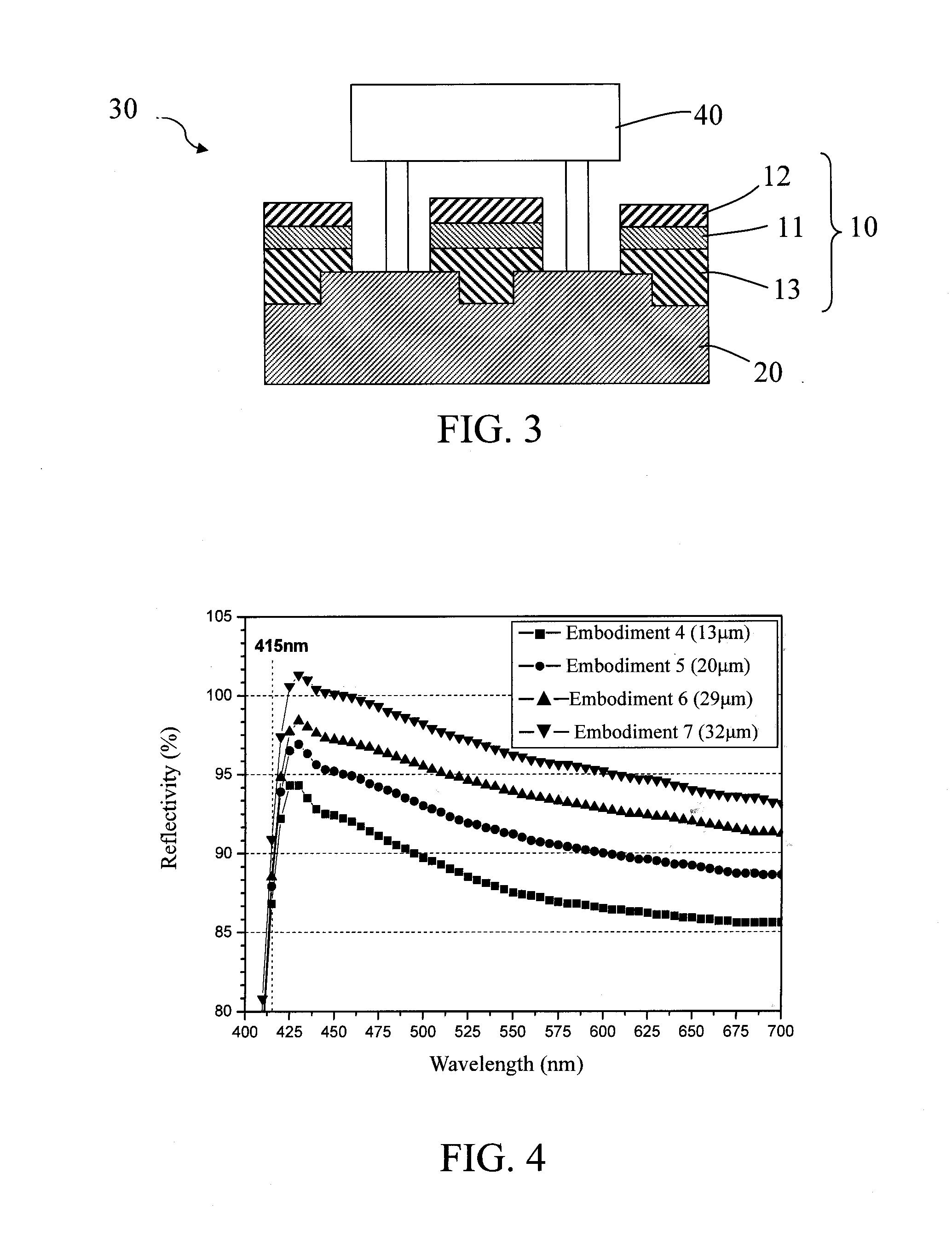Cover layer with high thermal resistance and high reflectivity for a printed circuit board
- Summary
- Abstract
- Description
- Claims
- Application Information
AI Technical Summary
Benefits of technology
Problems solved by technology
Method used
Image
Examples
embodiment 1
[0041]With reference to FIG. 1, a cover layer 10 with high thermal resistance and high reflectivity of a printed circuit board of the present embodiment comprised a polymer film 11, a reflective composite layer 12, an adhesive layer 13 and a releasing layer. The polymer film 11 had two side surfaces opposite to each other. The reflective composite layer 12 and the adhesive layer 13 were respectively mounted on the two side surfaces of the polymer film 11. The releasing layer was mounted on a side surface of the adhesive layer 13 that was opposite to the polymer film 11.
[0042]A method for making the cover layer 10 with high thermal resistance and high reflectivity for a printed circuit board of the present embodiment was as follows.
[0043]Firstly, the polymer film was provided.
[0044]Secondly, a first resin having functional groups, a first curing agent and a catalyst were mixed to from a first mixed solution. A first reflective pigment was dispersed in the first mixed solution by phys...
embodiment 2
[0050]The present embodiment was similar to Embodiment 1. The differences between the present embodiment and Embodiment 1 was that the content of the titanium dioxide powder was 30 vol. % based on the volume of the reflective composite layer. The reflectivity measurement result of the present embodiment was shown in Table 1.
embodiment 3
[0051]The present embodiment was similar to Embodiment 1. The differences between the present embodiment and Embodiment 1 was that the content of the titanium dioxide powder was 60 vol. % based on the volume of the reflective composite layer. The reflectivity measurement result of the present embodiment was shown in Table 1.
TABLE 1Measurement results of Embodiments 1 to 3.Embodiment123Thickness of reflective composite 20 μm20 μm20 μmlayerThickness tolerance of reflective ±2 μm±2 μm±2 μmcomposite layerKind of polymer filmPolyimidePolyimidePolyimideThickness of polymer film12.5 μm12.5 μm12.5 μmThickness of adhesive layer25 μm25 μm25 μmContent of first reflective pigment 20 vol %30 vol %60 vol %based on the volume of reflective composite layerReflectivity of cover layer (at a 89.0%90.2%90.5%wavelength of 550 nm)
PUM
 Login to View More
Login to View More Abstract
Description
Claims
Application Information
 Login to View More
Login to View More - R&D
- Intellectual Property
- Life Sciences
- Materials
- Tech Scout
- Unparalleled Data Quality
- Higher Quality Content
- 60% Fewer Hallucinations
Browse by: Latest US Patents, China's latest patents, Technical Efficacy Thesaurus, Application Domain, Technology Topic, Popular Technical Reports.
© 2025 PatSnap. All rights reserved.Legal|Privacy policy|Modern Slavery Act Transparency Statement|Sitemap|About US| Contact US: help@patsnap.com



